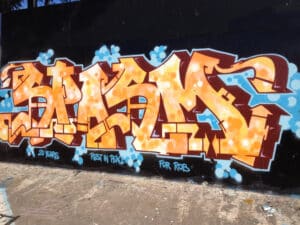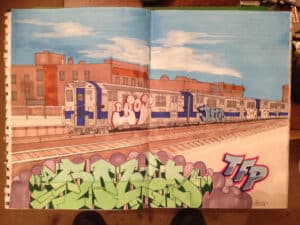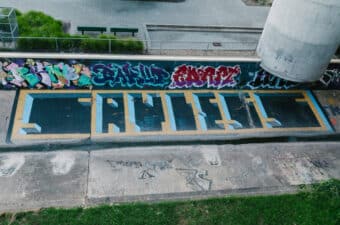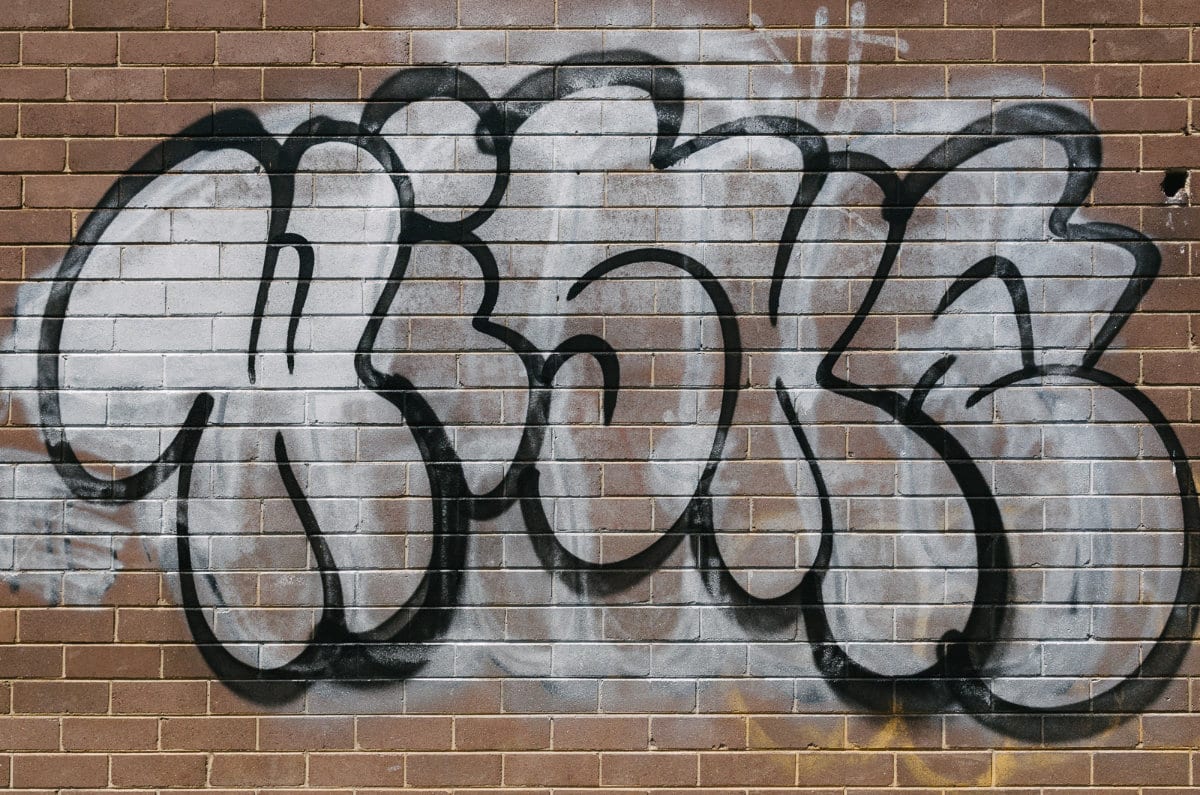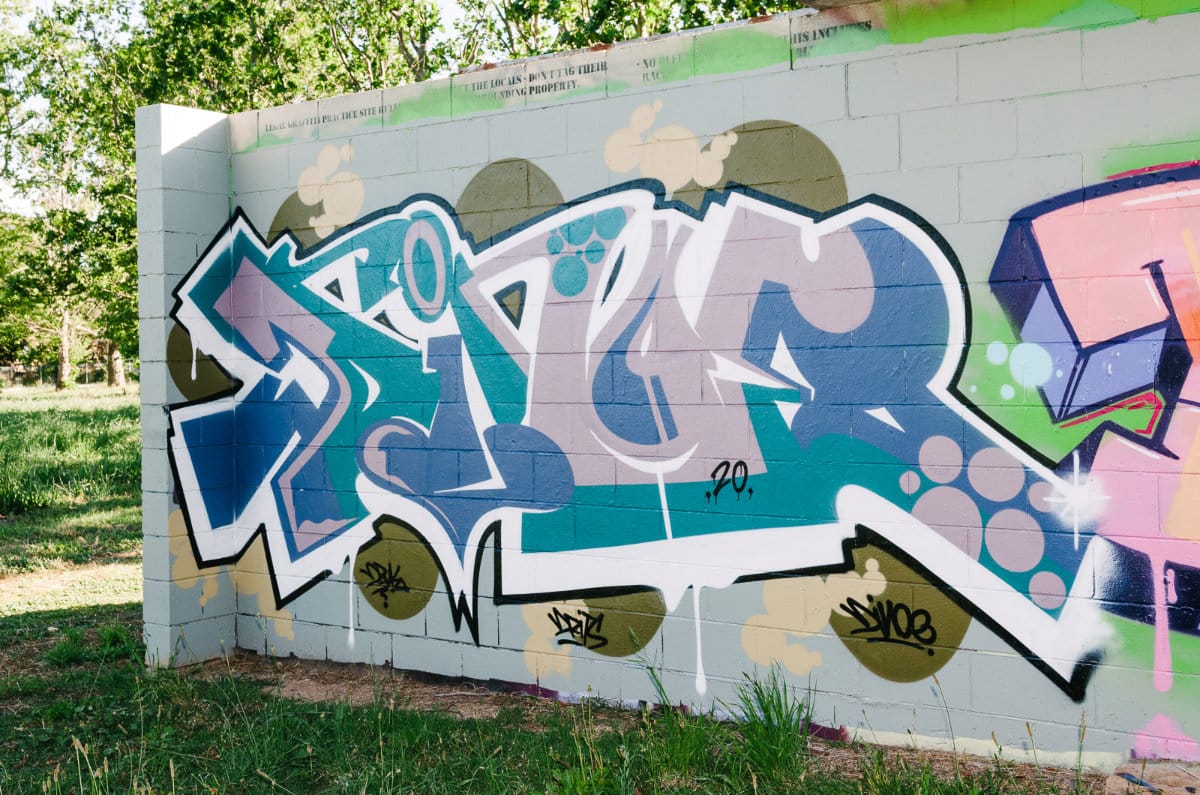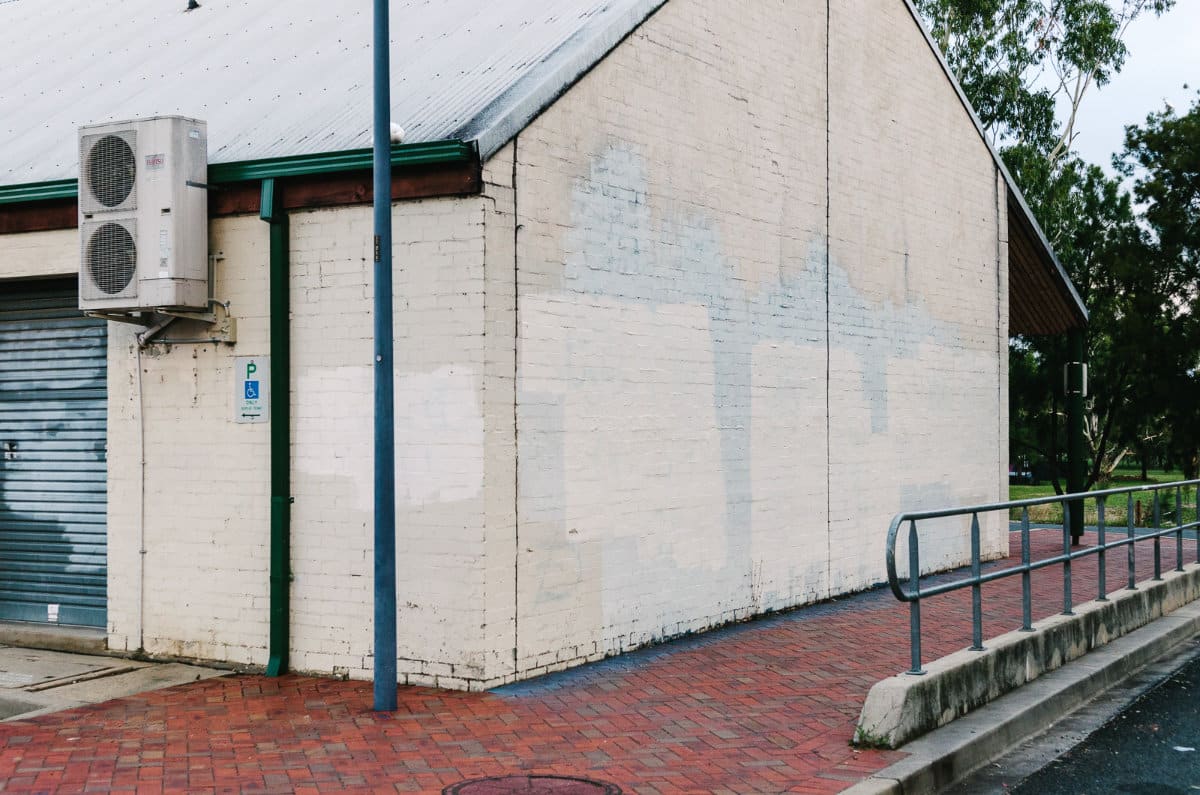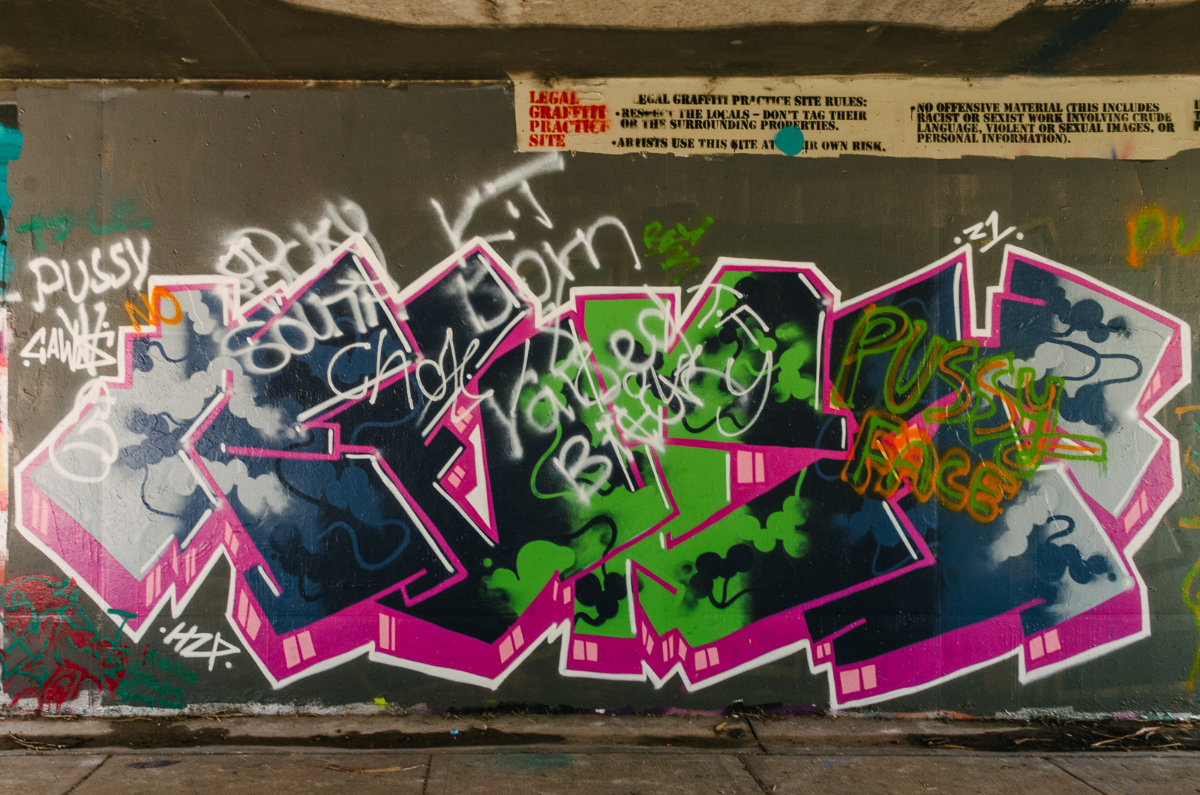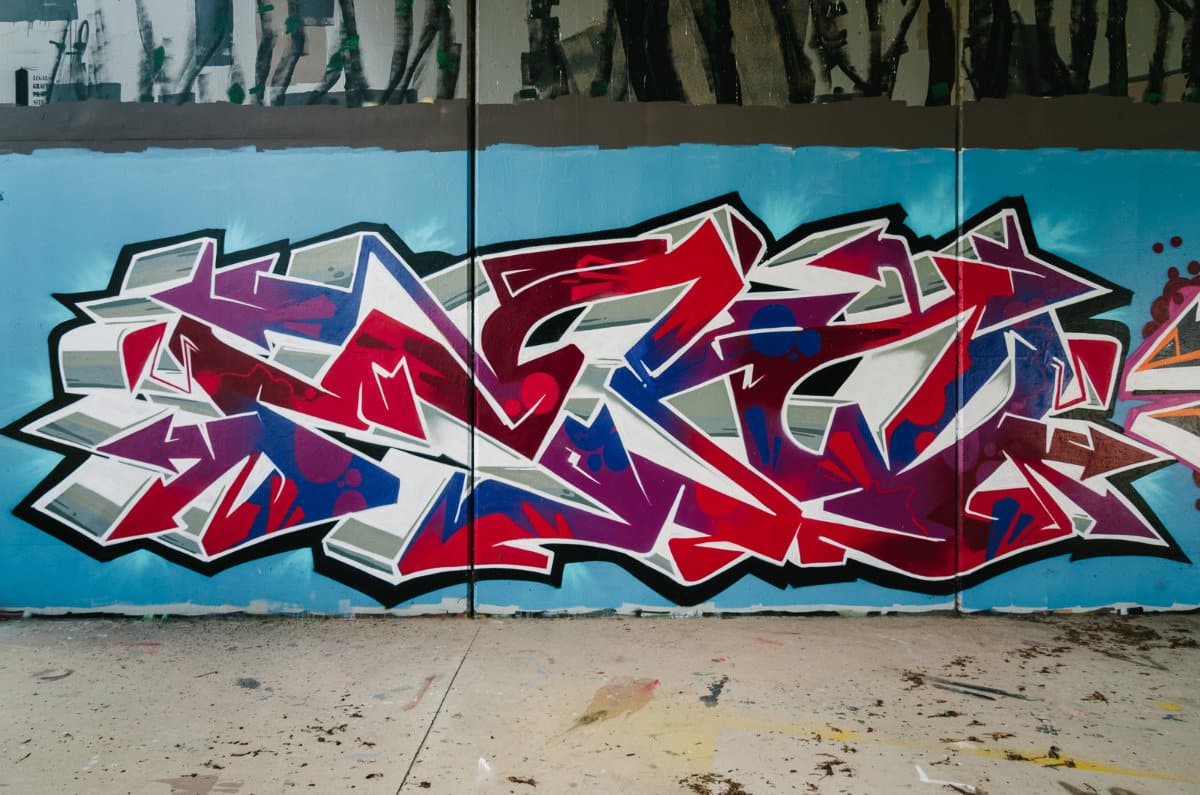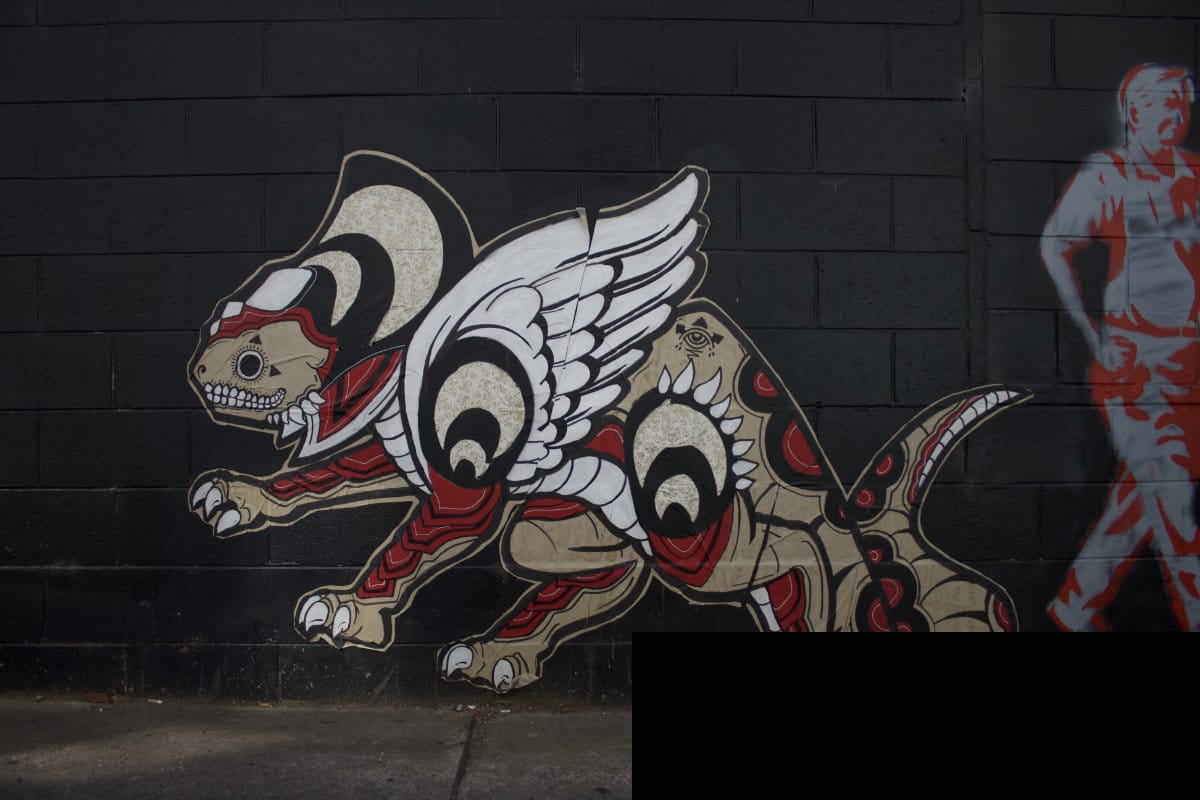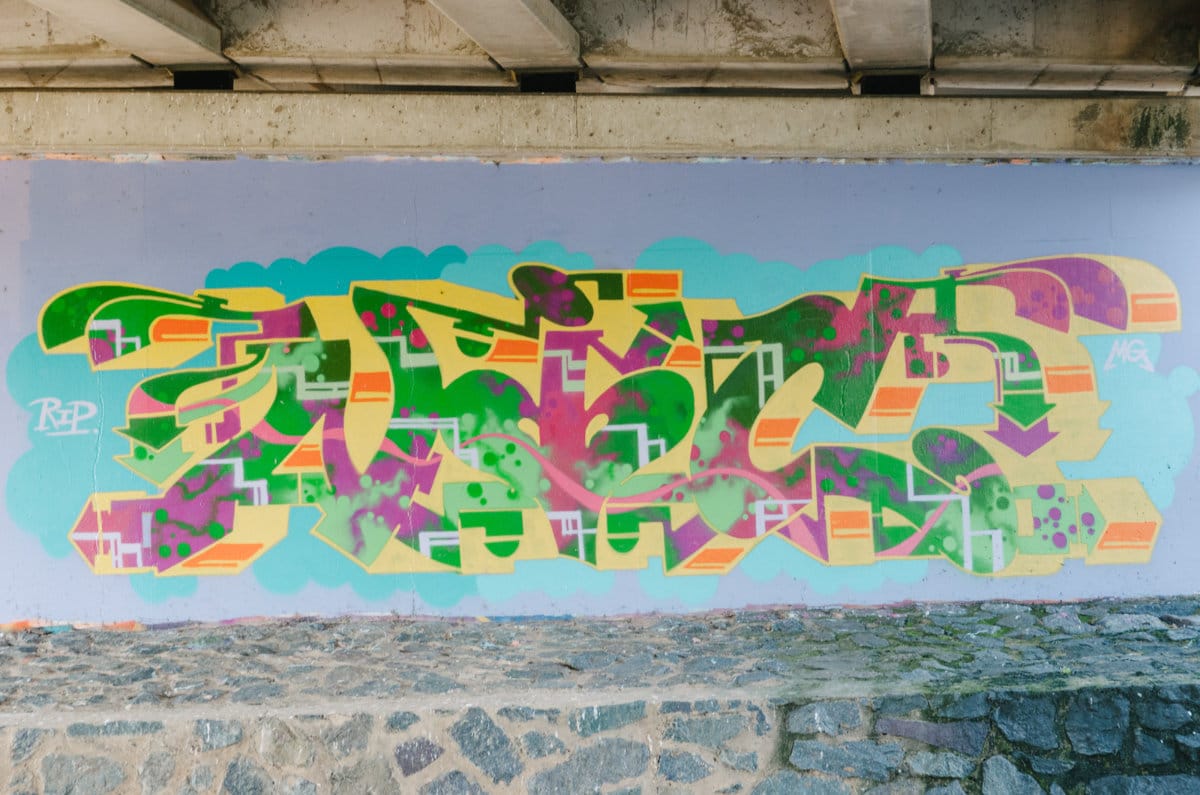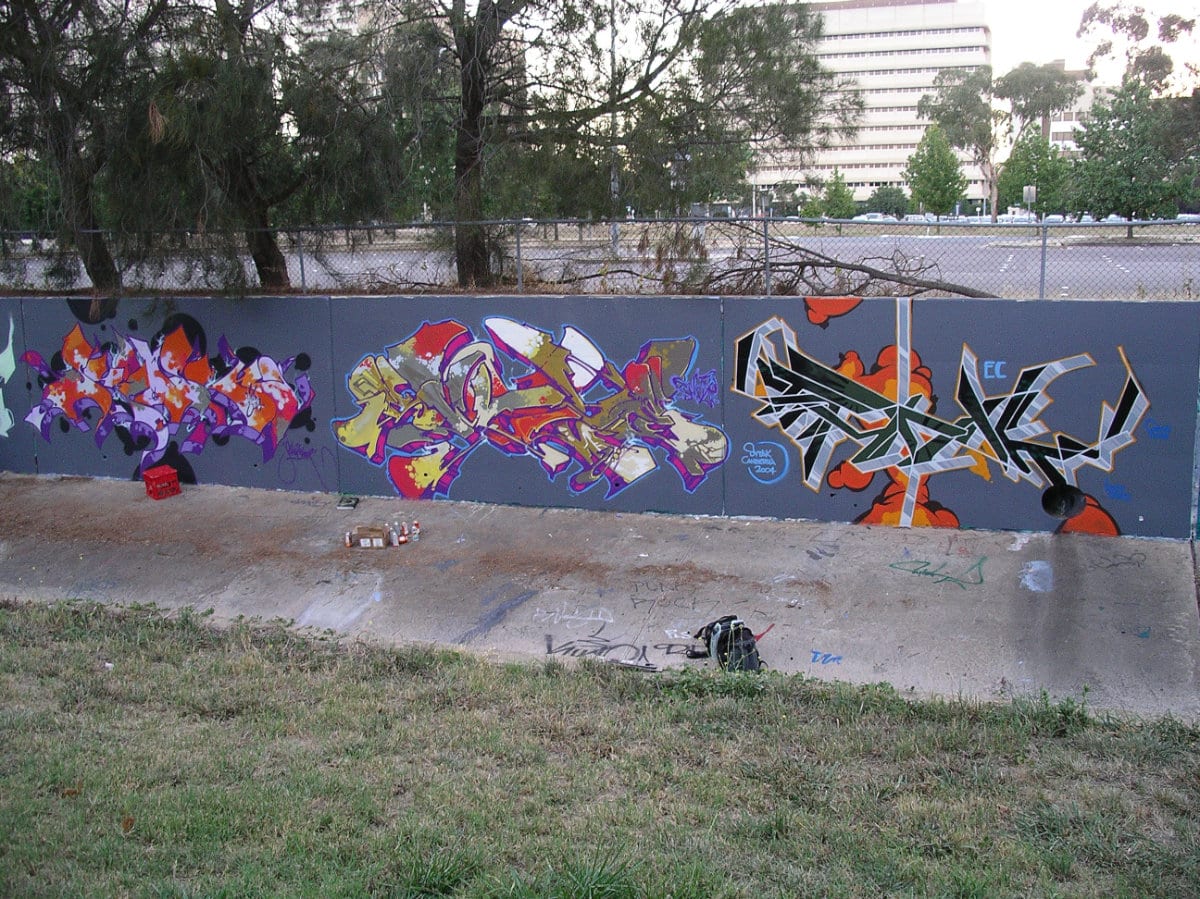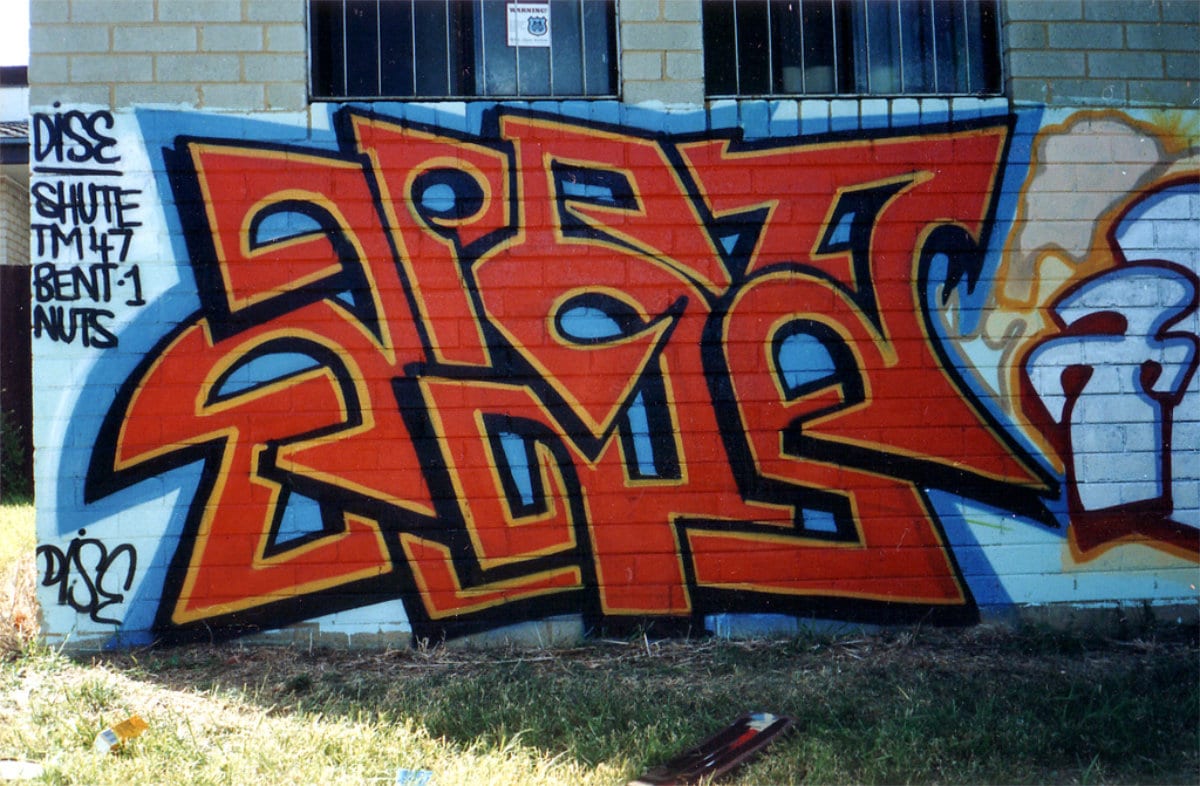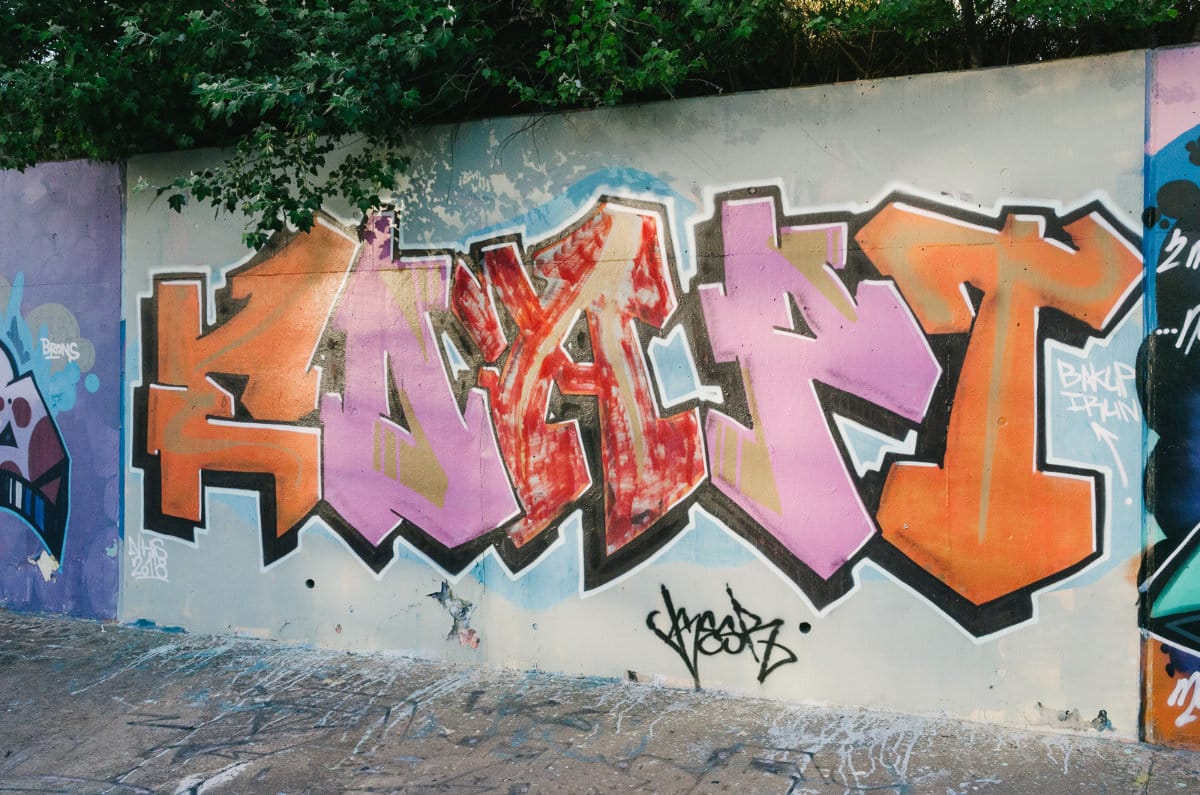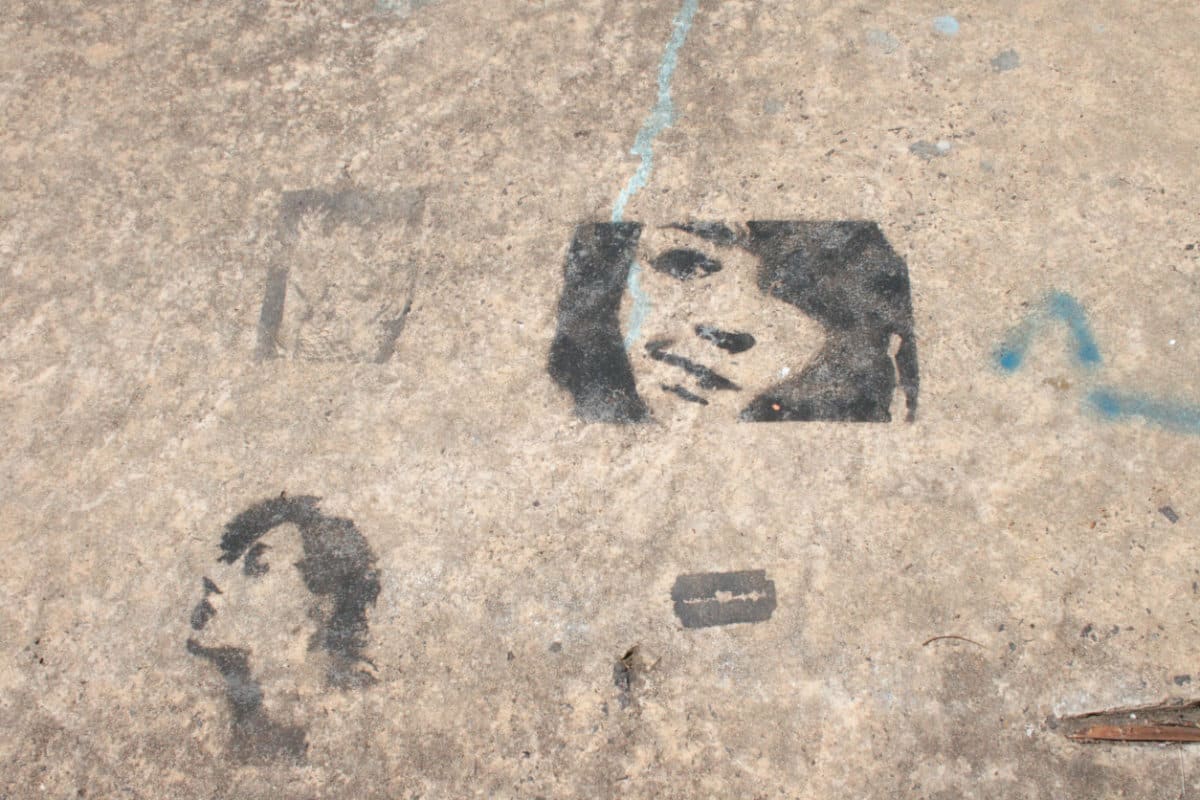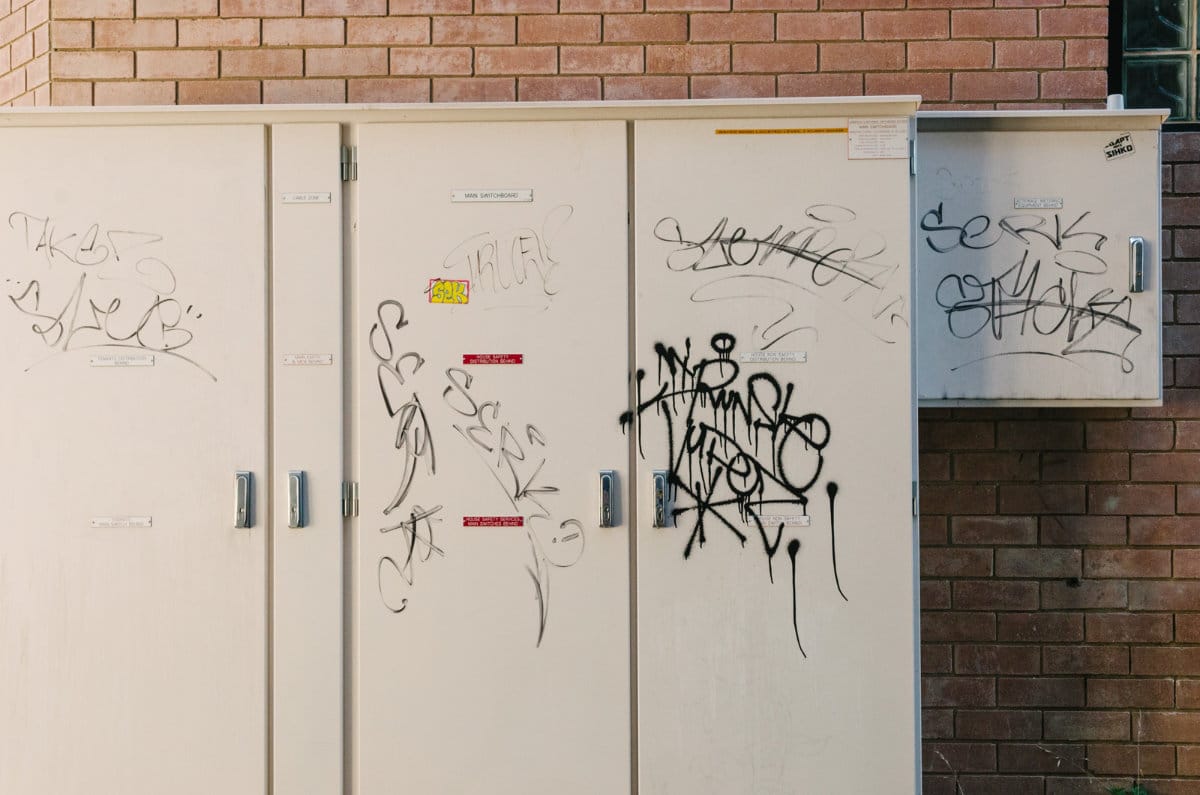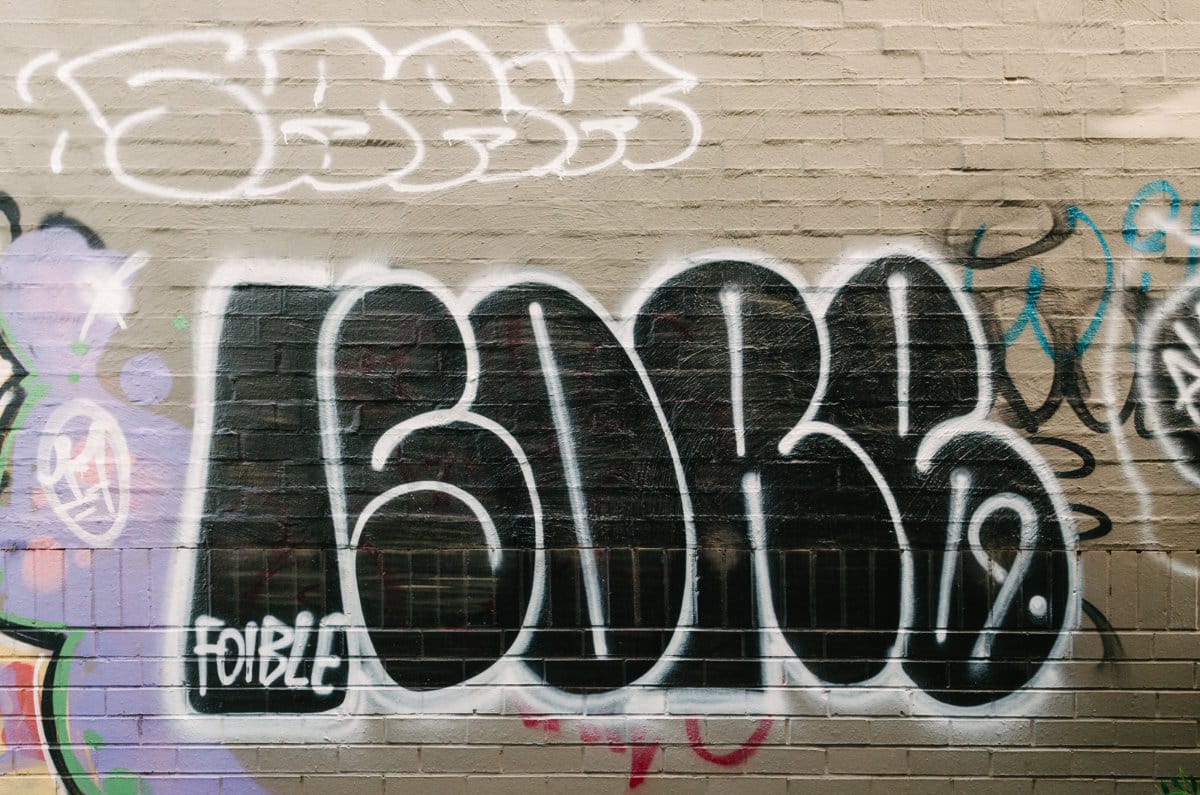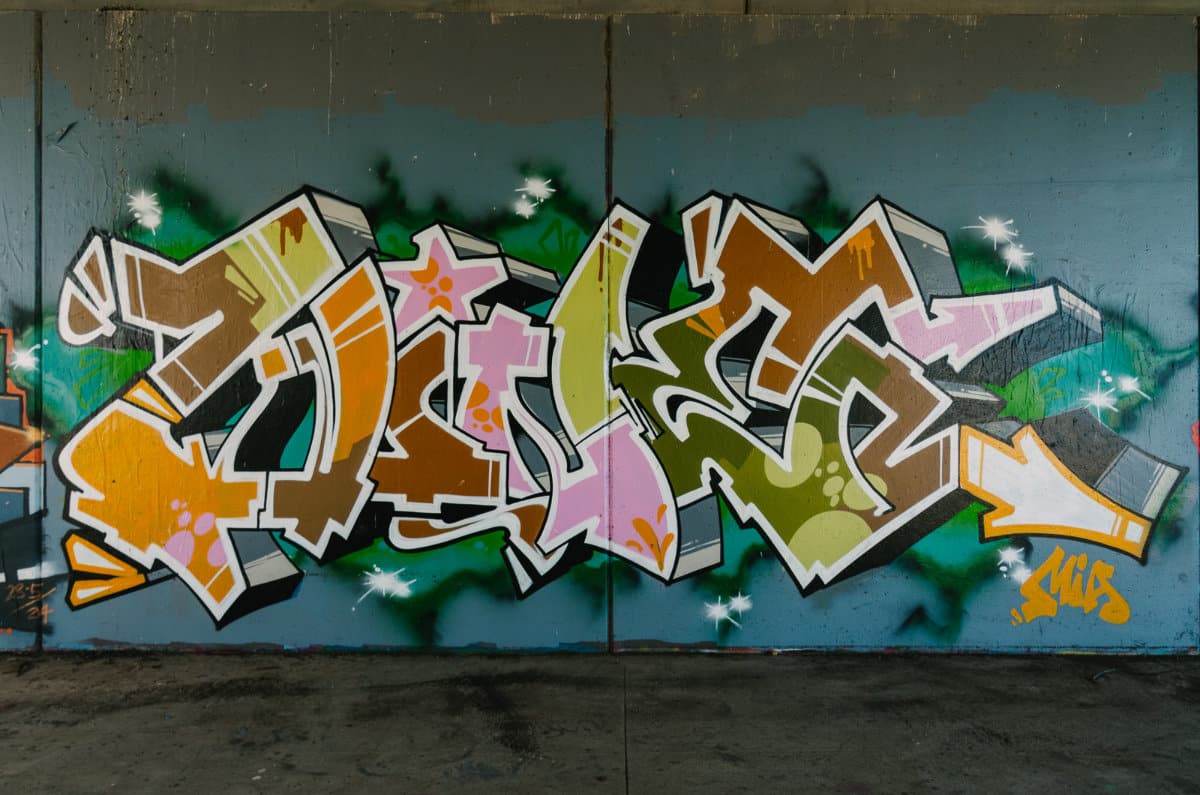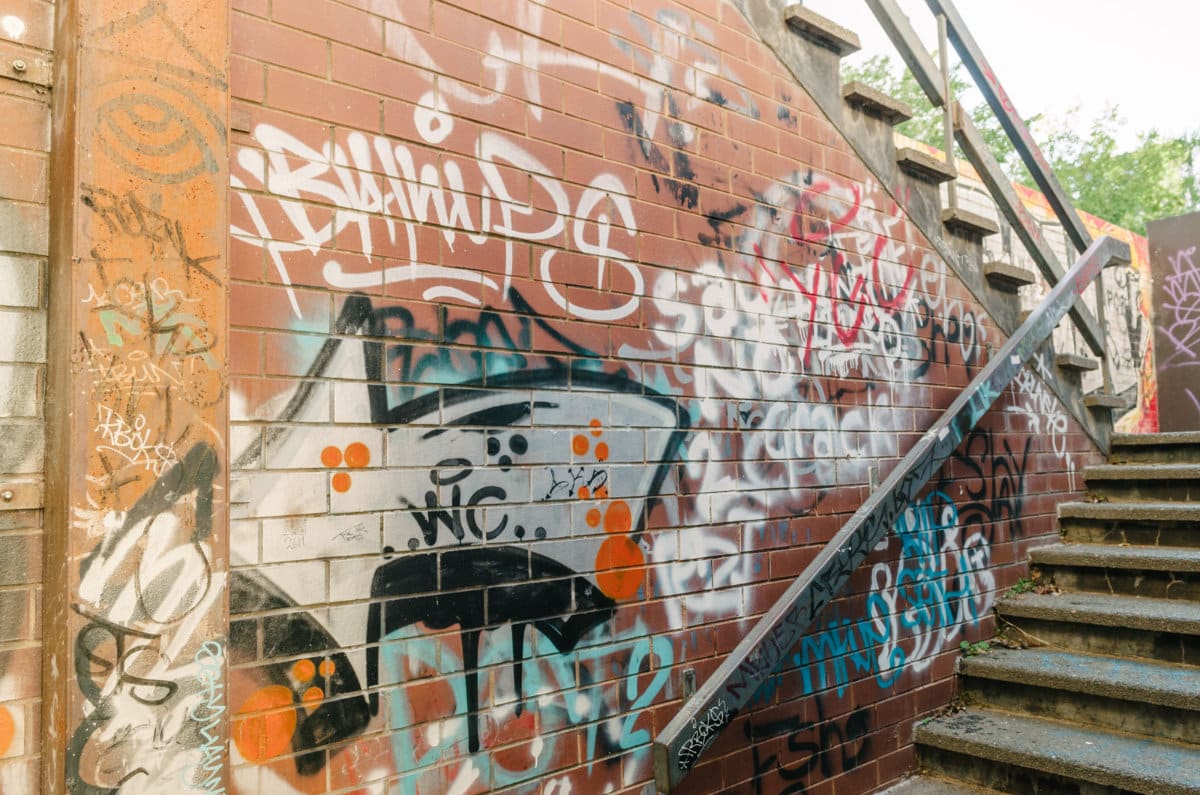Arrows
Stylistic additions to letters that add dimensionality and interest – arrows give directional prompts.
Battle
A stand-off competition between crews. A skills battle is when two writers piece a wall within a certain time period (usually a day or a few hours) and whoever does the best piece is the winner. A getting-up battle is when the writers take a certain area and whichever crew can get up the most in that area within a certain amount of time (say a week to a month), wins. For both kinds of battle, an outside crew or writer judges who is the winner. The terms of losing and winning are usually negotiated by the crews involved and can be payment in paint, pot, a sock in the jaw, the losing crew has to stop writing their name, etc., etc.
Beef
Disagreement or conflict
Bite
To copy another writer’s style, considered bad form.
Black book
Also known as a ‘piecebook’, a writer’s sketchbook.
Blockbuster
Big, square letters, sometimes tilted, usually in two colours. Large format that easily covers big areas.
Bomb
Tagging or painting prolifically in a short period of time.
Bubble letters
Rounded letter formations, old-style, used mainly as a throw-up because they can be sprayed or written quickly in a large format.
Bubbles
Stylistic additions to letters that add dimensionality and interest. Bubbles echo the irregular circle that a paint spray makes when sprayed face-on to a surface.
Buff/Buffing
Complete cover-up: rolled paint to bring a surface back to its original colour (but often a patchwork of various neutrals). Authorities who erase graff are called ‘the buff’ or the ‘buff squad’.
Burn
To beat the competition with your style. A good piece is one that ‘burns’. Also, to wear out.
Burner
An excellent piece, often in wildstyle, with good bright colours
Cannons
Spray cans
Cap
Fat or skinny. Also called ‘tips’. Interchangeable spray nozzles that can vary the width of a line. Different sized nozzles are now readily available in stores, but they were originally adapted from multiple aerosol products and cut to create wider lines. The attachment for nozzles is either ‘male’ (stalk poking out) or ‘female’ (hole for the tip).
Capping
A quick incomplete cover-up of a piece, often to make a point. Sometimes a single roll of paint, or a smaller throw-up, sometimes lots of tagging over a piece.
Character
A non-text writing graphic element that is usually a cartoon character, either original or based on something from popular culture. Often integrated into a production to fill spaces between pieces.
Chrome/Chromie
A quick throw-up that uses black and silver chrome paint.
Crew
A group of writers, including toys, who operate together on a regular basis but also tag their individual pieces with their crew acronym. Crew names are predominantly three letters, sometimes two letters. Eg. KOA, MD, 4SE (and can be in shorthand: 4SE is often merely a 4 in a circle). The crew names are often taken from Hip Hop songs or historical crew names. They are not restricted to local territory: some crews have members across the world and swap work and ideas by mail or online.
Drips serifs, bubbles
Stylistic additions to letters that add dimensionality and interest. ‘Drips’ originated from paint drips (which are bad form) but are now vertical strokes or deliberate stylised drips.
Fade
To blend colours
Fame
To gain fame (within the graff community) is the ultimate aim
Fill, fill-in
The base colours of a piece, falling within the outline.
Going over
One writer covering another as an insult, by crossing out or tagging over.
Hit
Tagging a surface with paint or ink
Keyline
The final highlight lines of a piece, pulling the entire work together. In this image – the final black outline against the blue background.
Kill
To bomb excessively.
King
Not only the best writer in a category, but the longest-lasting, most respected, most influential.
Legal
A piece made with permission or a space that is legal to use
Letters
The name or words written, proprietorial name (contested). Letters can be chosen by the writer or given to them by their crew. People who use the same name as someone else are battled or reprimanded, although is often ok if there is enough geographic distance. Letters can be changed regularly for fun or safety, but over time a regular name is adhered to.
Markers
Pens, with various nib widths and ink stability, used for tagging and outlining. A ‘stainer’ is a marker with a thick nib between 12-20mm. In Australia if you are caught with a stainer on you, there is a spot fine.
New School
Post-1984 (variable date), contemporary writing culture.
Old School
Specific term to reference the early days of graff writing (mid-70s–early 80s) and its music and styles.
Outline
The one word can be used in various ways: the initial paper sketch, the first drawing of the design on a wall, which acts as a skeleton or framework, or the ‘final outline’ that pulls the work together, before the keyline.
Paint-eater
An unprimed surface. Writers tend to roll with housepaint to prep before spraying.
Paste-ups
A category of street art where photocopies of any size (from small handcut images to multi-panel poster works) are adhered to a surface via the use of wheat or wallpaper paste.
Piece
Short for ‘masterpiece’, a substantial stand-alone graffiti writing work, usually by one writer. Various kinds of paint are used in a layered technique. It must have a minimum of three colours to differentiate it from a throw-up.
Posters or bill /gig posters
Posters stuck on public places, usually to advertise public events, especially bands and other arts events. In recent years superseded by Facebook and other social media advertising, but still popular.
Process
The formula of writing letters, esp. New York Style: roll/fill, sketch outline, colour, black outline, highlight, keyline.
Production
A coordinated effort by a crew where the space and design is pre-planned and the colours are shared, resulting in a fresh series of works that tie together while still retaining each writer’s personal style.
Racking/ racking up
Stealing, lifting supplies, adapting to purpose (eg taking nozzles from one can to adapt another)
Roll
The background preparation, often using tinned paint and rollers, used as to clear the surface of past graff before spray is applied.
Roll call
A list of names or crew acronyms at the side of a piece: this is paying respect to your crew, friends or other inspirational writers. Also the place to add RIP dedications.
Roller
A paint roller (used to prep sites) or graff produced exclusively with a roller, which produces block lettering.
Run
The length of time graff stays up before being covered or removed.
Scratchies
Markings made by scratching, scraping or etching into a surface with a blade or other sharp implement.
Scrub
A certain kind of throw-up filled in quickly and sketchily rather than a solid fill.
Serifs
Stylistic additions to letters that add dimensionality and interest. Serifs are a directional prompt.
Slam
To paint a dangerous or conspicuous location
Stencil art
A category of street art where hand-cut or commercial stencils are sprayed onto a surface either in a single colour or in multi-coloured layers.
Stickers
Used across graffiti and street art. The former is usually an extension of tagging where a sticker is hand-written and placed as a quick method of tagging; the latter tends to be imagery and is often handcut into shapes. Stickers can be paper, derived from stationery (“hello, my name is…”) or vinyl.
Straight letters
A direct easy to read style, also called straights or simples. Usually two colours, and often used for chromes.
Style
Variations in technique that identify a writer, no matter the letters used.
Tags /Tagging
Most basic form of graff writing, usually undertaken with a marker or paint pen or scratched. Tags are names or initials, rendered stylistically.
Tagger
Someone who only tags, as opposed to a writer, who can tag as part of a broader practice.
Throw-ups
A quick exercise in writing consisting of outline or bubble-writing, a step up from tagging. Sometimes there are two colours, an outline and a fill, but if it is more complex than this it becomes a ‘piece’.
Toy
A newbie. Someone inexperienced or incompetent. Can be a fond put-down or a pointed insult. Has been used in various ways as an acronym, most common is: Tag Over Your Shit.
Up
A current writer whose work is everywhere
Wack / wak
Substandard, incorrect, cheesy or weak work
Wildstyle
A complex, constructed style involving interlocking letters, arrows and connections. Hard to master and deliberately difficult to decipher.
Wrecked
A piece or space obliterated by tagging or capping.
Writer
A graffiti practitioner (not a street art artist)
